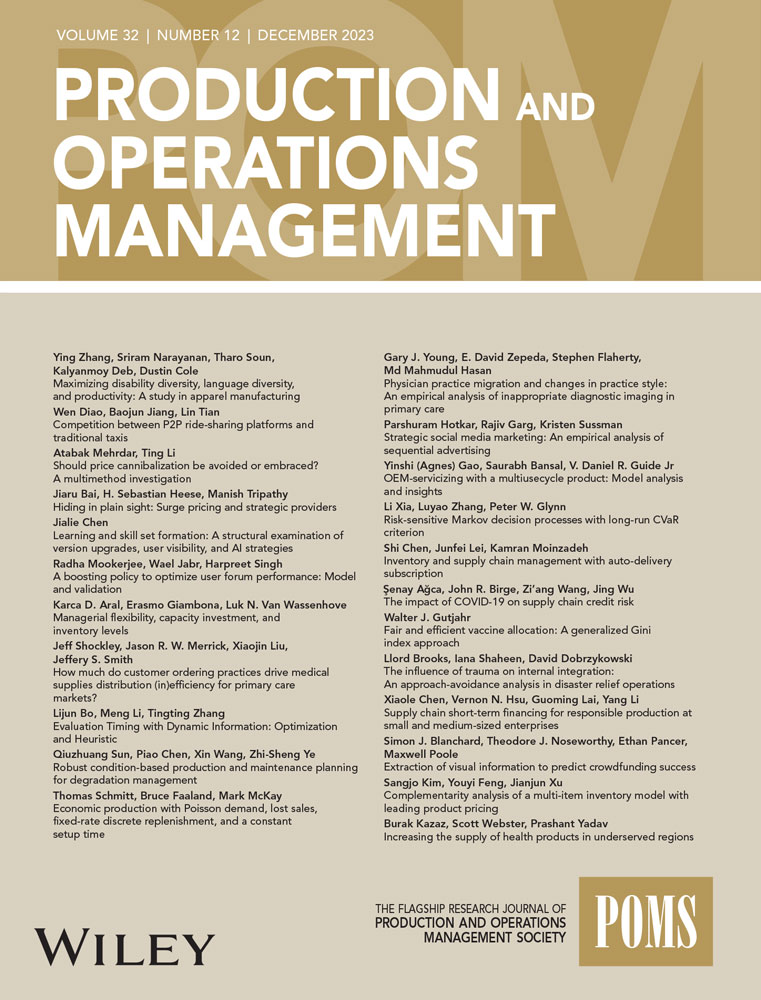具有信息感知通勤者的停车换乘停车场的最优容量大小
IF 5.1
3区 管理学
Q1 ENGINEERING, MANUFACTURING
引用次数: 0
摘要
我们研究了为对拥堵和停车位可用性信息敏感的通勤者提供服务的停车换乘停车场的容量大小。目标是为使用多项logit模型预测停车场选择的通勤者确定最大社会总福利的停车场容量。我们将该问题表述为一个非凸非线性规划,该规划涉及每个车位容量的下界和上界,以及反映停车信息和拥堵对通勤者车位选择影响的定点约束。我们表明,除了最多一个批次外,每个批次的最优容量取三个可能值中的一个。基于分析结果,我们开发了一种单变量搜索算法来求解模型。我们从数值结果中得知,具有高内在效用的大量的最优容量趋向于等于上限。相比之下,具有低或中等规模内在效用的大量倾向于在其有效下界上达到最优容量。我们评估了共享实时停车信息的通勤者在不同选择场景下的最优方案的性能。我们了解到,在平均选择情景中,当模型中同时考虑停车信息和拥堵的影响时,通勤者的生活状况会比忽略其中任何一种影响时更好。这篇文章受版权保护。版权所有本文章由计算机程序翻译,如有差异,请以英文原文为准。
Optimal capacity sizing of park‐and‐ride lots with information‐aware commuters
We study capacity sizing of park‐and‐ride lots that offer services to commuters sensitive to congestion and parking availability information. The goal is to determine parking lot capacities that maximize the total social welfare for commuters whose parking lot choices are predicted using the multinomial logit model. We formulate the problem as a non‐convex nonlinear program that involves a lower and an upper bound on each lot's capacity, and a fixed‐point constraint reflecting the effects of parking information and congestion on commuters' lot choices. We show that except for at most one lot, the optimal capacity of each lot takes one of three possible values. Based on analytical results, we develop a one‐variable search algorithm to solve the model. We learn from numerical results that the optimal capacity of a lot with a high intrinsic utility tends to be equal to the upper bound. By contrast, a lot with a low or moderate‐sized intrinsic utility tends to attain an optimal capacity on its effective lower bound. We evaluate the performance of the optimal solution under different choice scenarios of commuters who are shared with real‐time parking information. We learn that commuters are better off in an average choice scenario when both the effects of parking information and congestion are considered in the model than when either effect is ignored from the model.This article is protected by copyright. All rights reserved
求助全文
通过发布文献求助,成功后即可免费获取论文全文。
去求助
来源期刊

Production and Operations Management
管理科学-工程:制造
CiteScore
7.50
自引率
16.00%
发文量
278
审稿时长
24 months
期刊介绍:
The mission of Production and Operations Management is to serve as the flagship research journal in operations management in manufacturing and services. The journal publishes scientific research into the problems, interest, and concerns of managers who manage product and process design, operations, and supply chains. It covers all topics in product and process design, operations, and supply chain management and welcomes papers using any research paradigm.
 求助内容:
求助内容: 应助结果提醒方式:
应助结果提醒方式:


